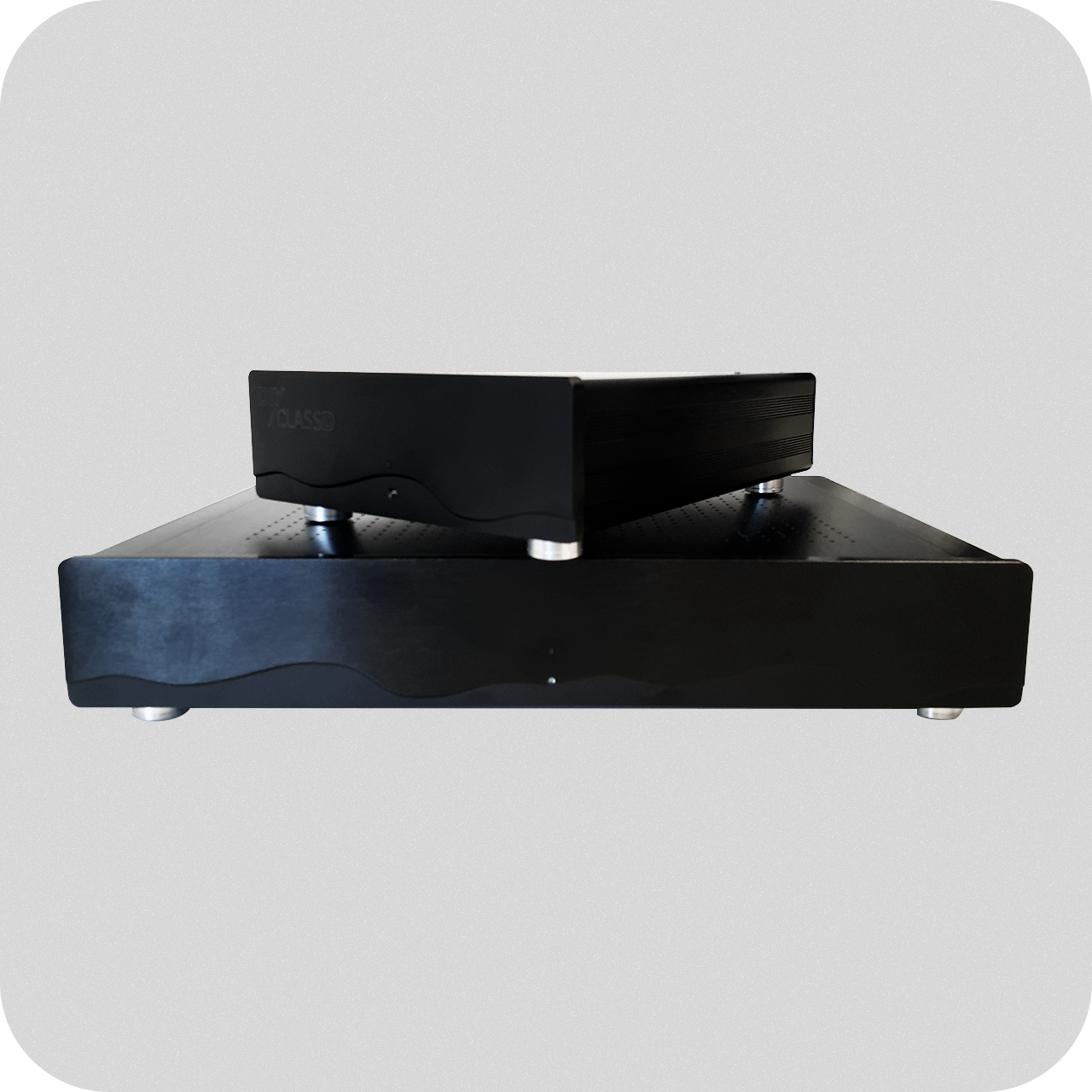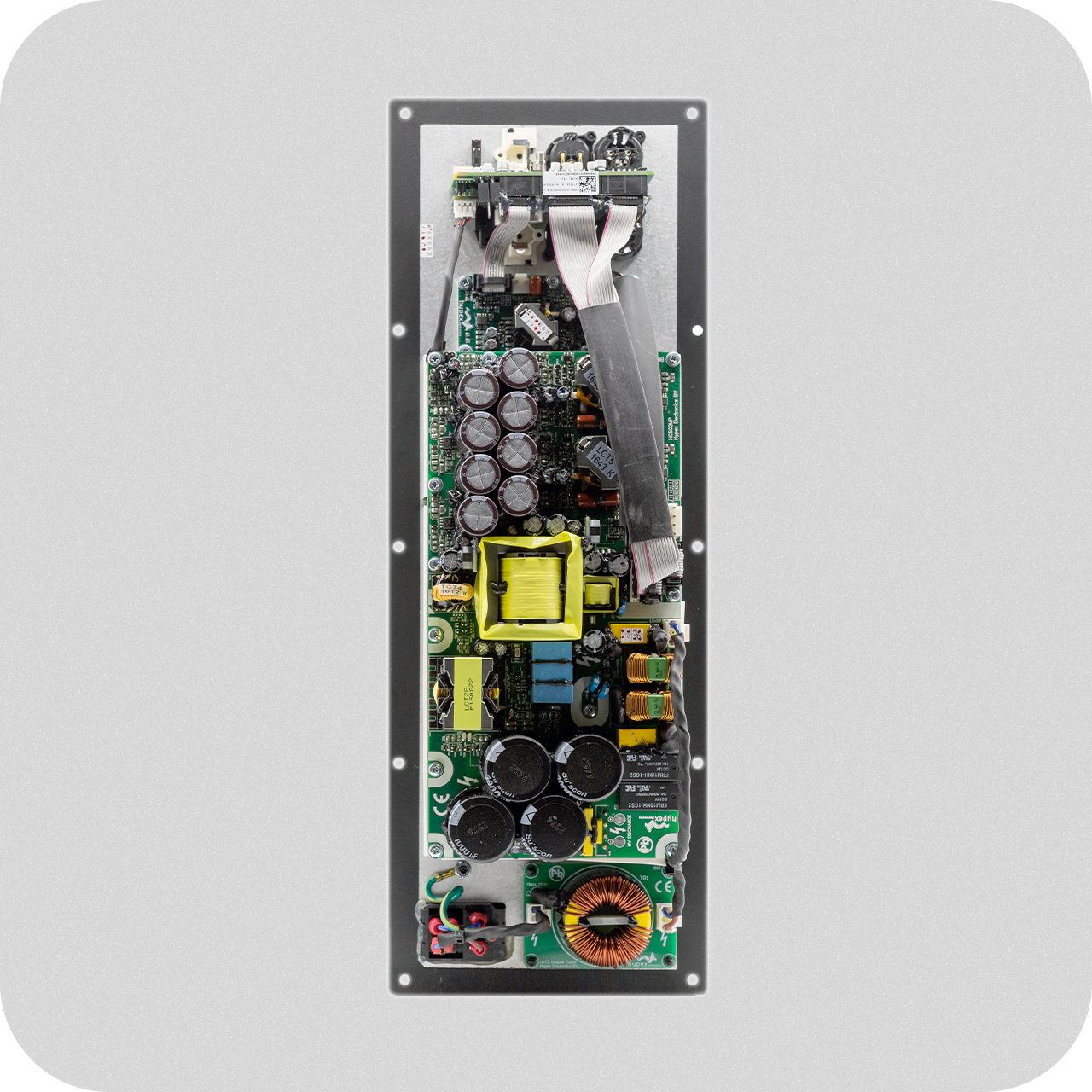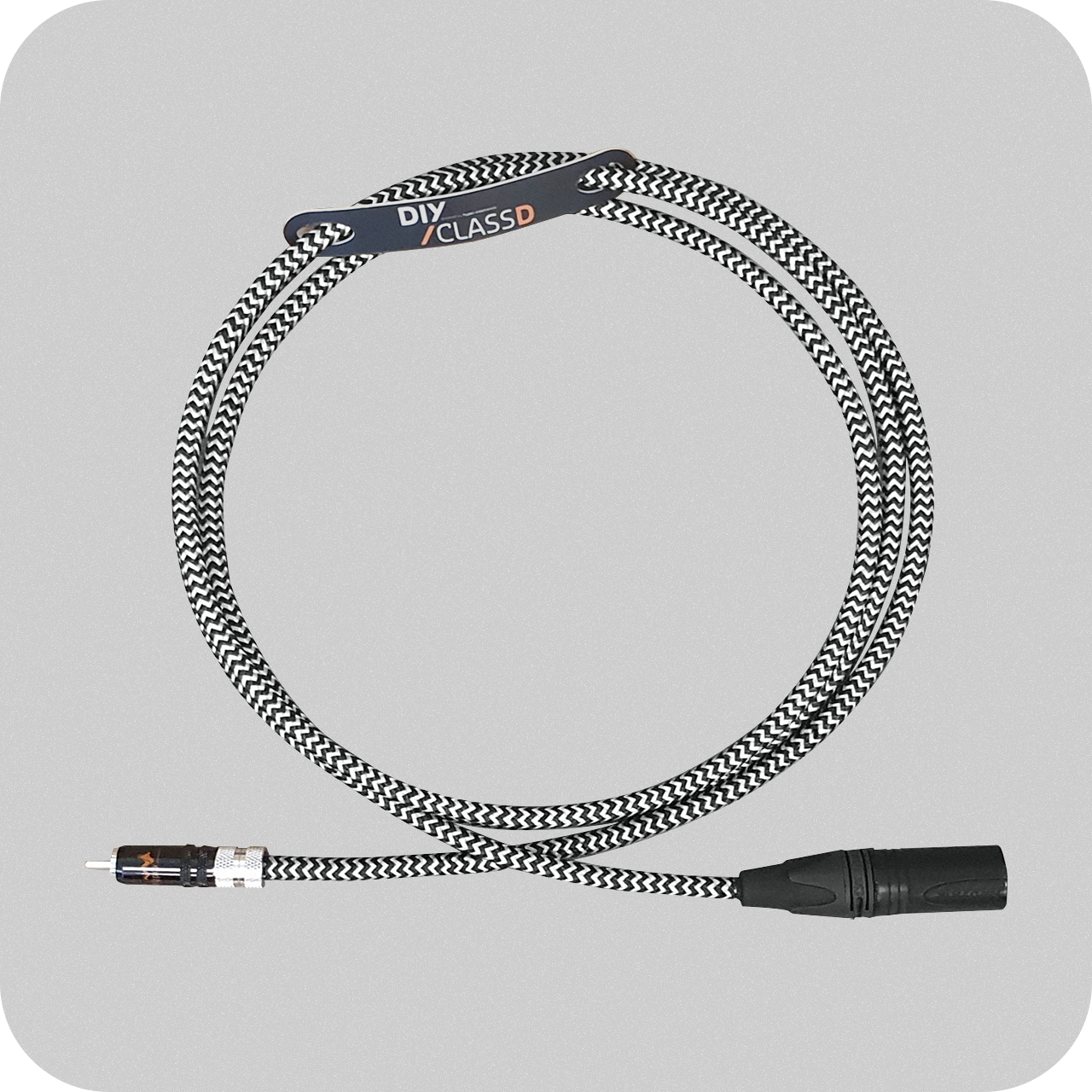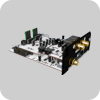Technical support
The 400kHz signal observed at the output of the amplifier is a residue of the switching nature of Class D amplifiers. This is completely normal and poses no harm. For more information, please refer to our EMI application note.
https://www.diyclassd.com/FAQ-Hypex/Technical-support/I-hooked-up-my-UcD-to-an-oscilloscope-and-I-see-some-HF-sine-wave-at-about-400-kHz.-Is-this-normal
To drive one of the modules 180 degrees out of phase, simply swap the negative and positive input signal wires. Connect the loudspeaker between both positive loudspeaker outputs of the amplifiers, and place a 100nF/200V capacitor across the loudspeaker terminals on the amplifier side. This setup is most suitable for 8-ohm loads, as each amplifier "sees" 4 ohms when an 8-ohm load is attached. A 4-ohm load may trigger the current protection, limiting the power output to less than expected.
https://www.diyclassd.com/FAQ-Hypex/Technical-support/I-need-double-the-power-in-an-8Ohm-load-than-a-UcD-amplifier-can-produce.-Is-there-some-way-I-can-bridge-two-for-example-UcD400-s
The HPR12/HNR12 are voltage regulators similar to the 7812/7912 ICs. The key differences are their wider bandwidth, lower noise, and lower output impedance. Additionally, they feature Kelvin-sense inputs, allowing the creation of a local regulator that does not need to be physically close to the circuit being powered. Typical op-amp based circuits exhibit significantly greater sensitivity to power supply ripple and noise than the DC PSRR values listed in the datasheet would indicate.
Clean power supplies are essential for high-quality audio performance. The noise and rejection specifications of the HxR modules are unparalleled, making them an excellent upgrade for any circuit that uses or requires regulators.
https://www.diyclassd.com/FAQ-Hypex/Technical-support/Does-my-amplifier-really-sound-better-when-upgraded-with-HxR-regulators
Input sensitivity is determined by the desired output power, the impedance of the speaker, and the gain of the amplifier. Naturally, the desired output power cannot exceed the amplifier's rated maximum. In this example, the input sensitivity for a 400W output at 4 ohms is calculated. The gain and maximum output power are specified in the datasheet. The speaker load depends on the user's application.

All Hypex products use IIR filters by default, providing efficient, low-latency signal processing. FIR filtering is available as an optional feature for applications requiring extremely precise phase and time control. In short, IIR offers performance and efficiency, while FIR adds linear-phase accuracy and advanced tuning flexibility.
https://www.diyclassd.com/FAQ-Hypex/Technical-support/What-is-the-difference-between-IIR-and-FIR-filters-in-Hypex-products





